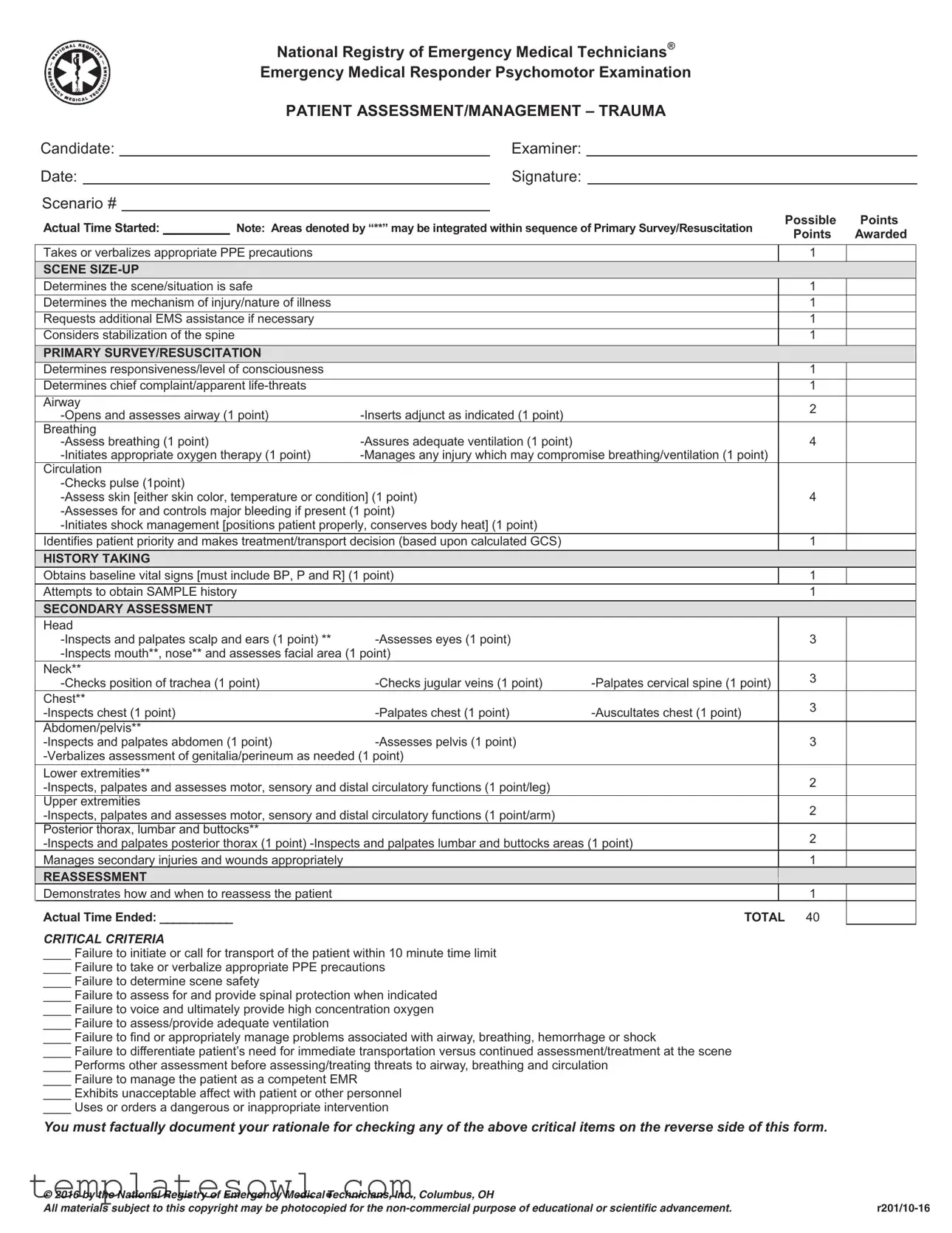What is the purpose of the EMT Trauma Assessment form?
The EMT Trauma Assessment form is designed to guide emergency medical responders through the process of evaluating and managing trauma patients. It helps ensure that all necessary steps are taken in a systematic manner, promoting patient safety and effective care.
Who uses the EMT Trauma Assessment form?
This form is utilized by emergency medical technicians (EMTs) and emergency medical responders (EMRs) during training and actual emergency response situations. It serves as a checklist to ensure that responders do not overlook critical aspects of patient assessment.
What are the main sections of the form?
The form is divided into several key sections: Scene Size-Up, Primary Survey/Resuscitation, History Taking, Secondary Assessment, and Reassessment. Each section includes specific tasks that responders need to complete or verbalize, ensuring a thorough evaluation of the patient.
What criteria must be met for successful completion of the assessment?
Responders must meet specific criteria outlined in the form. These include initiating transport within a certain time limit, taking necessary precautions, determining scene safety, and managing airway, breathing, and circulation. Failure to meet critical criteria can affect patient outcomes.
How are points awarded on the assessment form?
Points are awarded for various tasks as responders complete them. Each section contains tasks worth specific points, contributing to a total possible score of 40 points. Achieving a high score indicates proficiency in trauma assessment and management.
What happens if an EMT fails to meet a critical criterion?
If an EMT fails to meet a critical criterion, it is necessary to document the rationale on the back of the form. This documentation helps review the assessment and provides insights into areas requiring improvement in future scenarios.
Can the form be used for training purposes?
Yes, the EMT Trauma Assessment form is suitable for training purposes. It helps trainees practice their assessment skills in a structured manner. In addition, it serves as a valuable reference for examiners evaluating the performance of candidates during psychomotor examinations.
How often should EMTs review the assessment form?
Regular review of the assessment form is recommended. Frequent practice helps EMTs stay familiar with the procedures and criteria, allowing them to respond effectively in real-life situations. Using the form as a guide can bolster the confidence and skills of emergency responders.

